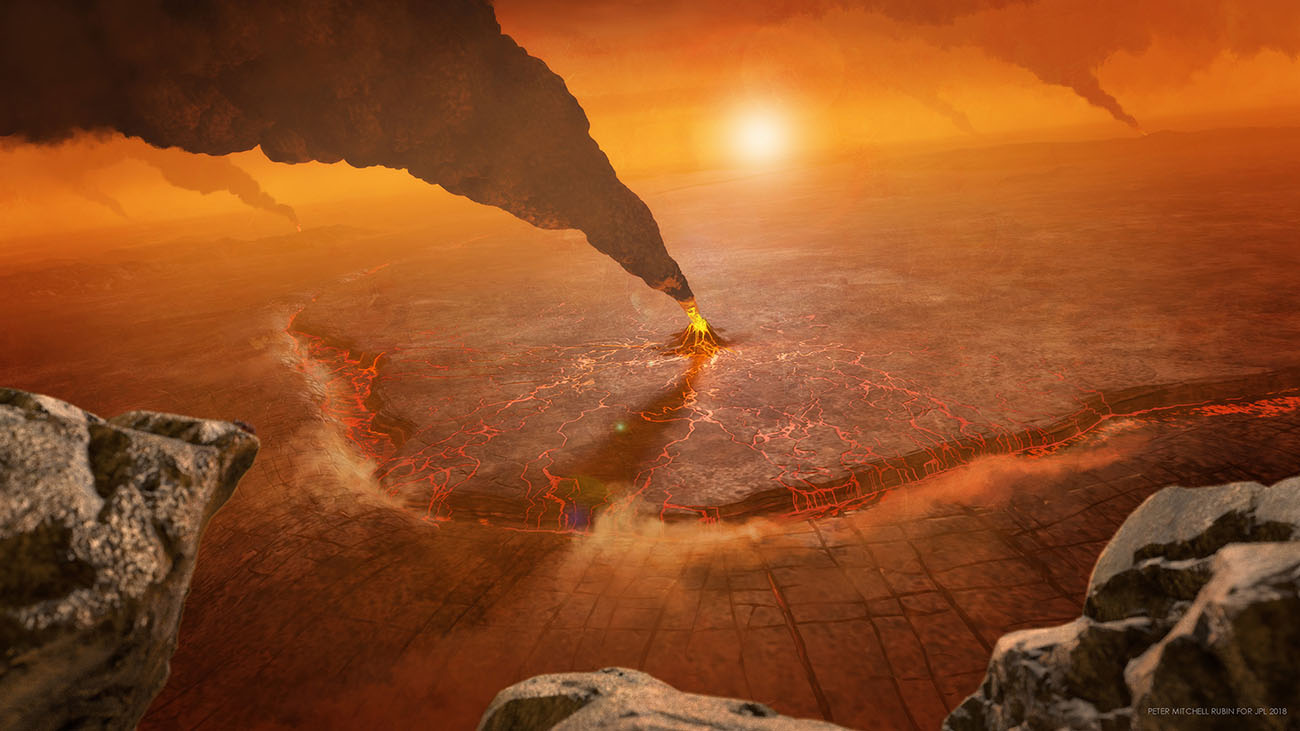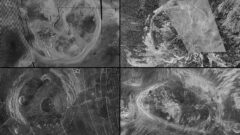This artist’s concept of the large Quetzalpetlatl Corona located in Venus’ southern hemisphere depicts active volcanism and a subduction zone, where the foreground crust plunges into the planet’s interior. A new study suggests coronae are the locations of several types of tectonic activity. (NASA/JPL-Caltech/Peter Rubin)
Home This artist’s concept of the large Quetzalpetlatl Corona located in Venus’ southern hemisphere depicts active volcanism and a subduction zone, where the foreground crust plunges into the planet’s interior. A new study suggests coronae are the locations of several types of tectonic activity. (NASA/JPL-Caltech/Peter Rubin) This artist’s concept of the large Quetzalpetlatl Corona located in Venus’ southern hemisphere depicts active volcanism and a subduction zone, where the foreground crust plunges into the planet’s interior. A new study suggests coronae are the locations of several types of tectonic activity. (NASA/JPL-Caltech/Peter Rubin)
This artist’s concept of the large Quetzalpetlatl Corona located in Venus’ southern hemisphere depicts active volcanism and a subduction zone, where the foreground crust plunges into the planet’s interior. A new study suggests coronae are the locations of several types of tectonic activity. (NASA/JPL-Caltech/Peter Rubin)




